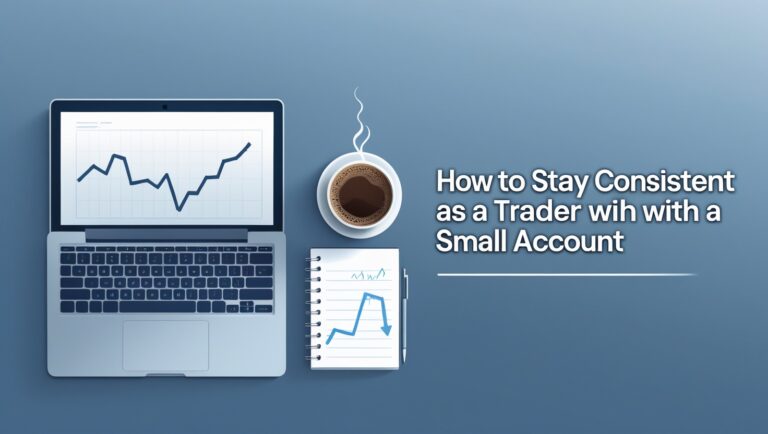How to Build a Watchlist That Actually Works
How to Build a Watchlist That Actually Works
When I first started trading, my watchlist was a mess. I had 20–30 stocks on it daily, most of them random. I thought more options meant more chances to win — but all it did was scatter my focus. Over time, I learned how to build a watchlist that actually works, and it completely changed my results.
Now I narrow my list down to just 5–6 stocks each morning, and I only trade what I prepared. This one change helped me avoid impulsive trades, stay consistent, and grow my small account. In fact, the method I use today is the same one I break down inside my ebook here, where I explain how I use that list to pay bills with simple setups.

Table of Contents
Why Most Watchlists Don’t Work
Most new traders add too many stocks to their list. They’re reactive instead of strategic. If it’s trending or someone called it out, they throw it on — even if it has no clear setup. That’s how you end up chasing.
A good watchlist is intentional. It’s not about volume alone — it’s about combining volume with structure, key levels, news, and a reason to move today.
My Pre-Market Process
I start scanning around 8:00AM. I look for:
- Stocks with fresh news or catalysts
- High relative volume (but not too crowded)
- Clear support and resistance zones
- A setup I recognize and trust
If a stock doesn’t meet my criteria, I skip it — even if it’s popular. I’d rather have a small, high-quality list than a big, noisy one.
Narrowing It Down to 6 Stocks
Why 6? Because that’s what I can realistically manage without rushing. I watch them closely, look for patterns at the open, and wait for confirmation. If nothing triggers, I don’t trade.
This discipline is what allowed me to trade less but earn more. I go into every day with a game plan. That structure helps me avoid emotional trades — and it keeps me in profit.
What Makes a Stock “Watchlist-Worthy”?
To make it onto my list, a stock has to show:
- Clean technical structure (breakout, flag, support bounce, etc.)
- Catalyst (news, earnings, gap-up, etc.)
- Volume that supports the move
- A risk level I’m comfortable with
If all I see is random movement or choppy price action, I move on. I only trade what I plan, and that’s made all the difference.
Final Thoughts
A solid watchlist is the foundation of a successful trading day. Without it, you’re reacting to everything — and that leads to overtrading, stress, and inconsistent results. With it, you’re calm, focused, and intentional.
If you want to learn how I build my watchlist every week, how I scan for clean setups, and how I only trade what works, you can grab my ebook here. I wrote it for traders like me — people who want to trade smarter, not harder.
A watchlist should not be something you throw together randomly. It’s a tool for discipline. When I started treating it that way, my trading changed. I stopped flipping through charts mid-trade. I already knew what I was looking for — and I waited for it to appear.
One of the first things I do when scanning is eliminate low-volume names. A stock might have potential, but if the volume isn’t there, I stay away. I need liquidity to get in and out cleanly, especially with a small account.
I also avoid stocks with messy daily charts. If I can’t see clear levels or a clean range, it’s not worth my time. I only add stocks to my list that have predictable structure. The market’s already hard — I don’t need to make it harder by trading noise.
My favorite setups involve previous day highs, premarket ranges, and intraday flags. If a stock is forming something familiar — and it has the volume to support it — that’s when I pay attention. I don’t guess. I wait.
One powerful habit I developed is labeling my watchlist. I’ll write things like: “breakout over $2.30” or “watch for support at $1.75.” This keeps me sharp and gives me a reference once the market opens. I’m not just watching — I’m watching with intention.
I also color-code my top picks. Usually, I’ll highlight 2–3 tickers that I’m most confident in. These are the ones I focus on at the open. I’ve learned that less is more. The fewer distractions I have, the better I trade.
Every Sunday, I build a weekly macro watchlist. I look at trending sectors, upcoming earnings, and major news events. This helps me prepare for the week ahead and gives me context when building my daily list.
If I notice a theme — like small-cap biotech stocks running — I’ll prioritize stocks in that niche. Momentum often rotates within sectors, and spotting those market patterns gives me an edge.
I review my watchlist after the market closes. I’ll look at how the stocks moved and whether they respected my levels. This feedback helps me adjust my scanning and stay sharp. It’s not just about trading — it’s about reviewing what worked and why.
Inside my ebook, I explain exactly how I build my watchlist, how I pick my top 6 tickers, and how that list helps me trade with confidence — even with a small account. This is the process that allowed me to start paying my bills with stocks, and I believe anyone can apply it with the right mindset.
A watchlist is more than a list. It’s your playbook. It’s what keeps you from chasing random moves. It brings structure to the chaos. And if you treat it with the respect it deserves, it can become one of your most profitable habits.
Keep it simple. Stay focused. Don’t add a stock just because it’s moving — add it because it makes sense to you, your plan, and your style. That’s what makes a watchlist that actually works.

Stay ahead in the stock market! Subscribe to our newsletter and receive exclusive stock flow reports, trading insights, and actionable tips directly in your inbox. Join thousands of traders who get our updates first.







